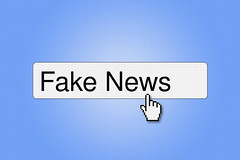
It is incredibly important to teach how to distinguish between real and fake news. It becomes especially important because of social media and how easy it is to spread information. In this video by John Spencer and this one by Damon Brown they both give some good tips to help tell the real from the fake news.
Since I want to teach high school Math, Chemistry and Computer Science, this will most likely come into the classroom when the students have to do research for a project or report. One thing I really like about the videos is that they give tips that you can apply to many different times that you need to know if something is fake news or not. For example, you can use the same tips to know if something is fake when you are going to post something on social media, as you would on a research report. The reason why I like this is because sometimes people will put a lot less importance on sharing something fake on social media then if they where writing about it in a paper or project, and there are some cases where it is not as big of a deal but posting something that is fake on social media can cause a lot of damage and it could have a ripple effect where once you shared it you can’t stop it from being spread around, so it is important to make sure, to the best of your ability that whatever you are posting is accurate.
I also read through this comic that discussed the backfire effect/ confirmation bias, it is very interesting to see a comic talk about the backfire effect. Confirmation bias is the bias that most people have where you want to post/hear/read things that support your established beliefs. It is a natural response to want to defend yourself when someone is challenging your beliefs, but it is important to be able to look at all perspectives and not get defensive. It is very important to teach students (especially high school students) to look at different perspectives to be able to make their own informed decision about something, this is not only for school but also a good life skill. For example, when you are writing a paper you have to look at your best counter arguments to make sure you pick an effective thesis, and that you are addressing the right points. A good real-life example is when teenagers start to question their beliefs, and if what they were taught as a child is really the right thing. It becomes vitally important that they can look at both sides and decipher what is fake and what is real.
Leave a Reply